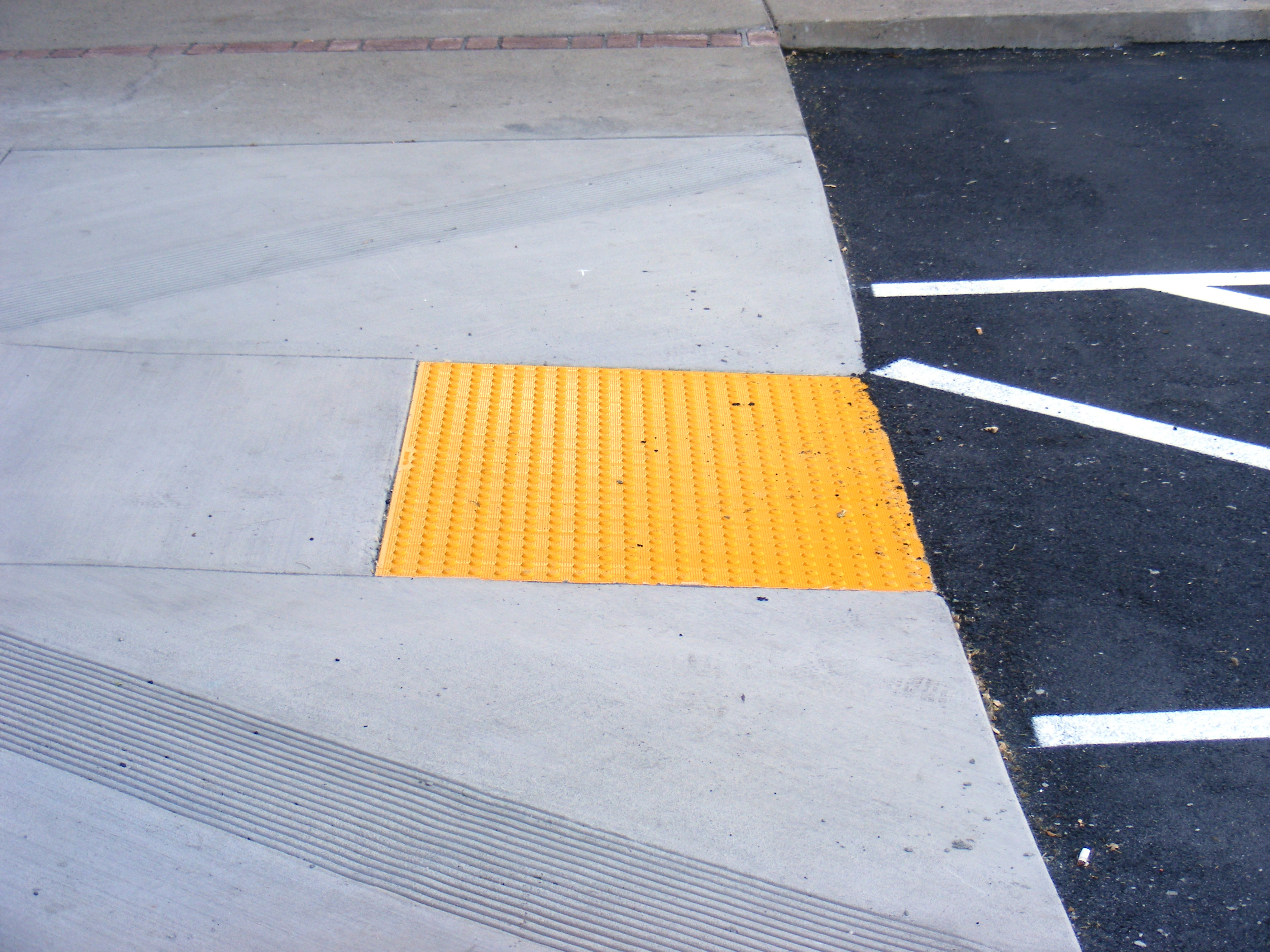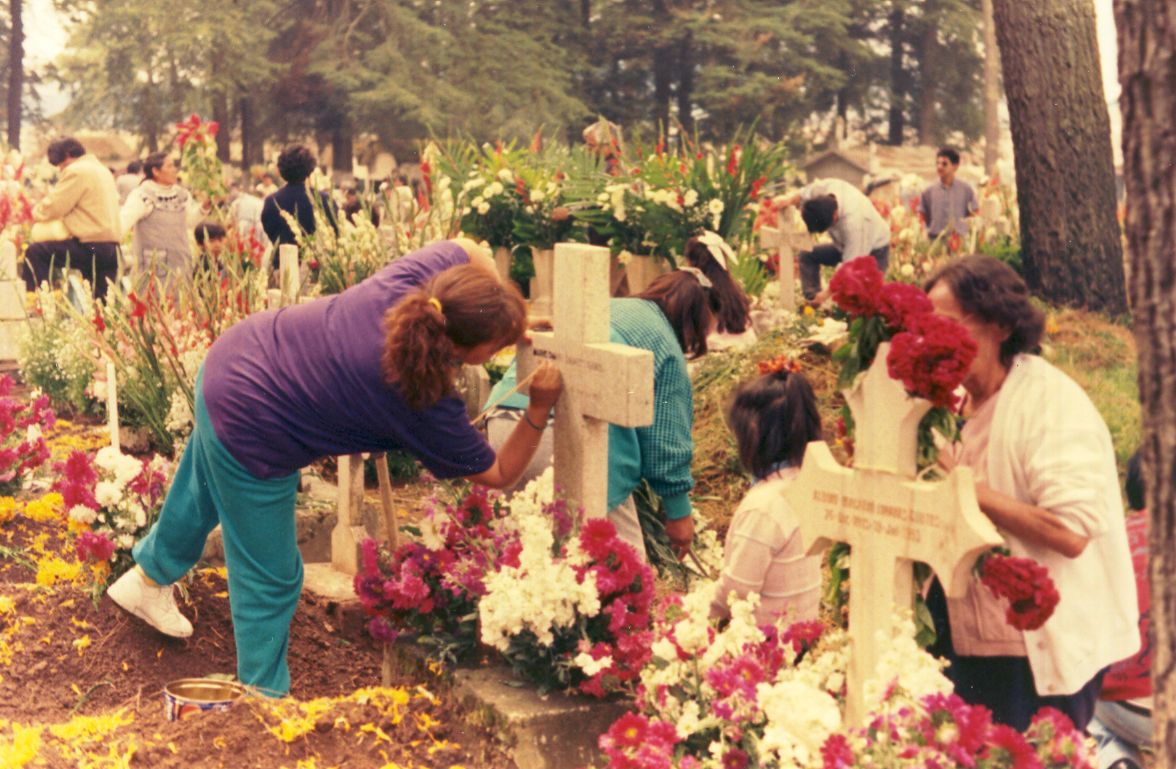|
Tezonco Metro Station
Tezonco metro station is a station of the Mexico City Metro in the town of San Lorenzo Tezonco and in the ''colonia'' of Granjas San Jerónimo, in Tláhuac, Mexico City. It is an Elevated railway, elevated station with two side platforms, served by Mexico City Metro Line 12, Line 12 (the Golden Line), between Periférico Oriente metro station, Periférico Oriente and Olivos metro station, Olivos stations. The station's pictogram features a calavera as it references the area's Day of the Dead traditions during the festivity. The station was opened on 2012, on the first day of service from Tláhuac metro station, Tláhuac to Mixcoac metro station, Mixcoac metro stations. The facilities are Accessible tourism, accessible for people with disabilities as there are elevators, tactile pavings and braille signage plates and there is a bicycle parking station. In 2019, the station had an average daily ridership of 23,131 passengers, making it the fourth-busiest station on the line. ... [...More Info...] [...Related Items...] OR: [Wikipedia] [Google] [Baidu] |
Metro Tezonco Pictogram
Metro may refer to: Geography * Metro City (Indonesia), a city in Indonesia * A metropolitan area, the populated region including and surrounding an urban center Public transport * Rapid transit, a passenger railway in an urban area with high capacity and frequency * The public transport operator of city or metropolitan area * The transportation authority of city or metropolitan area * The urban rail transit system of a city or metropolitan area Rail systems Africa * Algiers Metro in Algiers, Algeria * Cairo Metro in Cairo, Egypt * Lagos Rail Mass Transit in Lagos, Nigeria Asia * Busan Metro, Republic of Korea (South Korea) * Daegu Metro, Republic of Korea (South Korea) * Dhaka Metro, Bangladesh * Doha Metro, Qatar * Dubai Metro, United Arab Emirates (U.A.E.) * Kaohsiung Rapid Transit, Taiwan * Lahore Metro, Pakistan * Manila Metro Rail Transit System, the Philippines * New Taipei Metro, Taiwan * Osaka Metro, Japan * Riyadh Metro, Saudi Arabia * Seoul Metropolitan Subway, Rep ... [...More Info...] [...Related Items...] OR: [Wikipedia] [Google] [Baidu] |
Mexico City Metro Line 12
Line 12, also known as the Golden Line from its color on the system map, is a rapid transit line of the Mexico City Metro network. It travels along the Boroughs of Mexico City, boroughs of Benito Juárez, Mexico City, Benito Juárez, Iztapalapa and Tláhuac in southwestern, central-southern and southeastern Mexico City, serving twenty stations. The line was inaugurated on 30 October 2012, going from Tláhuac metro station, Tláhuac to Mixcoac metro station, Mixcoac station. In 2016, work to expand it to Observatorio metro station (Mexico City), Observatorio station started. All the stations are Accessible tourism, accessible to people with disabilities as they have elevators, tactile pavings and braille signage plates. Line 12 was built by Mexican construction company Empresas ICA in association with Alstom, Alstom Mexicana and Grupo Carso. It runs at At-grade railway, grade, Elevated railway, overground and underground levels. The interchange stations are Mixcoac (Mexico ... [...More Info...] [...Related Items...] OR: [Wikipedia] [Google] [Baidu] |
Aristegui Noticias
María del Carmen Aristegui Flores (; born January 18, 1964) is a Mexican journalist and news anchor. She is widely regarded as one of Mexico's leading journalists and opinion leaders, and is best known for her critical investigations of the Mexican government. She is the anchor of the news program ''Aristegui'' on CNN en Español, and writes regularly for the opinion section of the periodical ''Reforma''. In March 2015, she was illegally fired from MVS Radio 102.5 FM in Mexico City following a report on the conflicts of interest by then Mexican President Enrique Peña Nieto with a state contractor. The contractor had allegedly built a millionaire residence for the president and his family. She manages her own news website and hosts an online morning newscast, which is also broadcast on Grupo Radio Centro's XERC-FM. Early life Aristegui was born on 18 January 1964 in Mexico City, the fifth of seven children. Her father was a Basque Spaniard who had immigrated to Mexico when he w ... [...More Info...] [...Related Items...] OR: [Wikipedia] [Google] [Baidu] |
Colonia (Mexico)
In List of cities in Mexico , Mexican urban geography, colonias () are neighborhoods. The name of the ''colonia'' must be specified when writing a postal address in Mexican cities. Usually ''colonias'' are assigned a specific postal code; nonetheless, in recent urban developments, gated community, gated communities are also defined as ''colonias'' and share the postal code of adjacent neighborhoods. Colonias do not have jurisdictional autonomy or representation. See also * Barrio * Barrios Mágicos * Colonias of Mexico City References Subdivisions of Mexico {{Mexico-geo-stub ... [...More Info...] [...Related Items...] OR: [Wikipedia] [Google] [Baidu] |
Mexico City Metro Overpass Collapse
On 3 May 2021, at 22:22 Central Time Zone, CDT (UTC−5), a Girder bridge, girder overpass in the borough of Tláhuac carrying Mexico City Metro Line 12, Line 12 of the Mexico City Metro collapsed beneath a passing train. The overpass, along with the last two Car (train), railcars of the train, fell onto Eje vial#Eje 10 Sur, Avenida Tláhuac near Olivos metro station, Olivos station, resulting in 26 fatalities and 98 injuries. It was the deadliest accident in the Metro's history in nearly fifty years. Before the line opened, it faced technical and structural issues that persisted during its operation, resulting in a partial closure of the Elevated railway, elevated section where the accident occurred, lasting from 2014 to 2015. 2017 Puebla earthquake, An earthquake in 2017 further damaged the structure; although repairs were completed within a few months, residents reported that problems persisted for years. Originally announced in 2007 as an underground line capable o ... [...More Info...] [...Related Items...] OR: [Wikipedia] [Google] [Baidu] |
Bicycle Parking Station
A bicycle parking station, or bicycle garage, is a building or structure designed for use as a bicycle parking facility. Such a facility can be as simple as a lockable bike cage or shed or as complex as a purpose-built multi-level building: the common purpose is that they provide secure bicycle parking. Bicycle parking stations also go by names such as ''bike stations'', ''bicycle centers'' and ''cycle centers'', among many others. Bicycle parking stations can offer additional facilities such as bicycle repairs, and customer facilities such as showers or lockers. Some are staffed while others are not. Some require users to join as members, while others are on a per-use basis or completely free of charge. Some are based at railway stations to facilitate "Intermodal passenger transport#Cycling to public transport nodes, i.e. Bike-and-Ride, bike and ride" multi-modal transport, while others are situated at the end of the commute and as such are located in town or city centres, uni ... [...More Info...] [...Related Items...] OR: [Wikipedia] [Google] [Baidu] |
Braille
Braille ( , ) is a Tactile alphabet, tactile writing system used by blindness, blind or visually impaired people. It can be read either on embossed paper or by using refreshable braille displays that connect to computers and smartphone devices. Braille can be written using a slate and stylus, a braille writer, an electronic braille notetaker or with the use of a computer connected to a braille embosser. For blind readers, braille is an independent writing system, rather than a code of printed orthography. Braille is named after its creator, Louis Braille, a Frenchman who lost his sight as a result of a childhood accident. In 1824, at the age of fifteen, he developed the braille code based on the French alphabet as an improvement on night writing. He published his system, which subsequently included musical notation, in 1829. The second revision, published in 1837, was the first Binary numeral system, binary form of writing developed in the modern era. Braille characters are f ... [...More Info...] [...Related Items...] OR: [Wikipedia] [Google] [Baidu] |
Tactile Paving
Tactile paving (also called tenji blocks, truncated domes, detectable warnings, tactile tiles, tactile ground surface indicators, tactile walking surface indicators, or detectable warning surfaces) is a system of textured ground surface indicators found at roadsides (such as at curb cuts), by and on stairs, and on railway station platforms, to assist pedestrians who are visually impaired. Tactile warnings provide a distinctive surface pattern of truncated domes, cones or bars, detectable by a long cane or underfoot, which are used to alert the vision-impaired of approaching streets and hazardous surface or grade changes. There is disagreement between the design and user community as to whether installing the aid inside buildings may cause a tripping hazard. A system of tactile paving was first instituted in Japan at pedestrian crossings and other hazardous road situations; the United Kingdom, Australia and the United States picked up the standard in the early 1990s. Canada ... [...More Info...] [...Related Items...] OR: [Wikipedia] [Google] [Baidu] |
Accessible Tourism
Accessible tourism is the ongoing endeavor to ensure tourist destinations, products, and services are accessible to all people, regardless of their physical or intellectual limitations, disabilities or age. It encompasses publicly and privately owned and operated tourist locations. The goal of accessible tourism is to create inclusivity of all including those traveling with children, people with disabilities, as well as seniors. This allows those with access requirements to be able to function as an independent using products following the universal design principle, a variety of services, and different environments. Background Overview Accessible tourism is defined as a way of making tourist locations more accessible to all populations. It does not just encompass those with disability, but it includes people of all populations including those with children and the elderly. The tourism industry is continuously evolving which has led to a need for accessibility. Because of ... [...More Info...] [...Related Items...] OR: [Wikipedia] [Google] [Baidu] |
Mixcoac Metro Station
Mixcoac is a station on Line 7 and Line 12 of the Mexico City Metro. The station serves both lines as a transfer station and as the northwestern terminus of Line 12. In 2019, the station had an average total ridership of 54,963 passengers per day. History The station opened on 19 December 1985 as part of the third stage of Line 7. In 2012, with the inauguration of Line 12, Mixcoac became a transfer station, as well as the temporary terminus of the mentioned line. An extension of Line 12 from Mixcoac to Observatorio is under construction, projected to be finished by 2020. By that time, Mixcoac will no longer work as the western terminus of Line 12. General information The station runs deep under Avenida Revolución, a main thoroughfare in Mexico City. It serves the Mixcoac area of the city. There are two main entrances to the station: one in the west sidewalk of the aforementioned avenue and the other in a small plaza between Avenida Revolución, Avenida Patriotismo, Eje 7 ... [...More Info...] [...Related Items...] OR: [Wikipedia] [Google] [Baidu] |
Day Of The Dead
The Day of the Dead () is a holiday traditionally celebrated on November 1 and 2, though other days, such as October 31 or November 6, may be included depending on the locality. The multi-day holiday involves family and friends gathering to pay respects and remember friends and family members who have died. These celebrations can take a humorous tone, as celebrants remember amusing events and anecdotes about the departed. It is widely observed in Mexico, where it largely developed, and is also observed in other places, especially by people of Mexican heritage. The observance falls during the Christian period of Allhallowtide. Some argue that there are Indigenous Mexican or ancient Aztec influences that account for the custom, though others see it as a local expression of the Allhallowtide season that was brought to the region by the Spanish; the Day of the Dead has become a way to remember those forebears of Mexican culture. The Day of the Dead is largely seen as having a festi ... [...More Info...] [...Related Items...] OR: [Wikipedia] [Google] [Baidu] |
Calavera
A calavera (Spanish – for "skull"), in the context of the Day of the Dead, is a representation of a human skull or skeleton. The term is often applied to edible or decorative skulls made (usually with molds) from either sugar (called Alfeñiques) or clay, used in the Mexican celebration of the Day of the Dead () and the Roman Catholic holiday All Souls' Day. ''Calavera'' can also refer to any artistic representations of skulls or skeletons, such as those in the prints of José Guadalupe Posada, or to gifts or treats in relation to the Day of the Dead.Cordova, Ruben C. (2005). "Calaveras". In Ilan Stavans, ed. in chief, and Harold Augenbraum, assoc. ed., ''Encyclopedia Latina: History, Culture, and Society in the United States.'' Danbury, Conn.: Grolier Academic Reference, 4 vols.: I: 248–249 Some widely known ''calaveras'' are created with cane sugar, decorated with items such as colored foil, icing, beads, and sometimes objects such as feathers. They range in multiple color ... [...More Info...] [...Related Items...] OR: [Wikipedia] [Google] [Baidu] |






